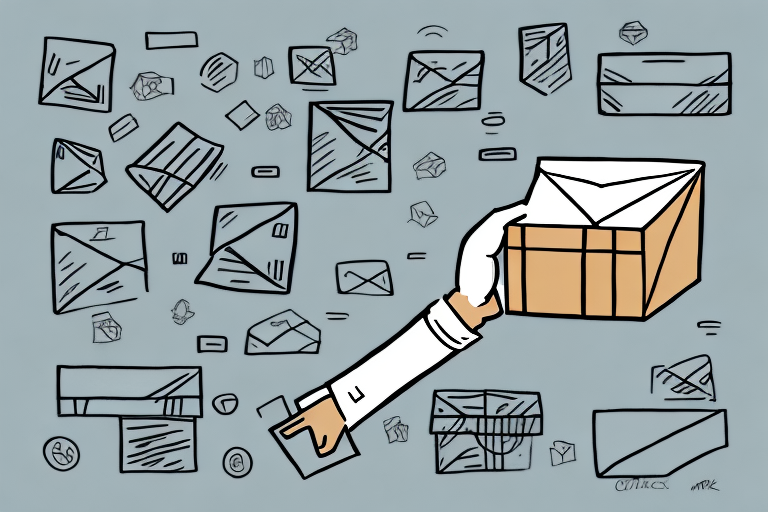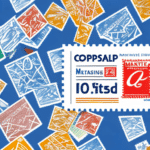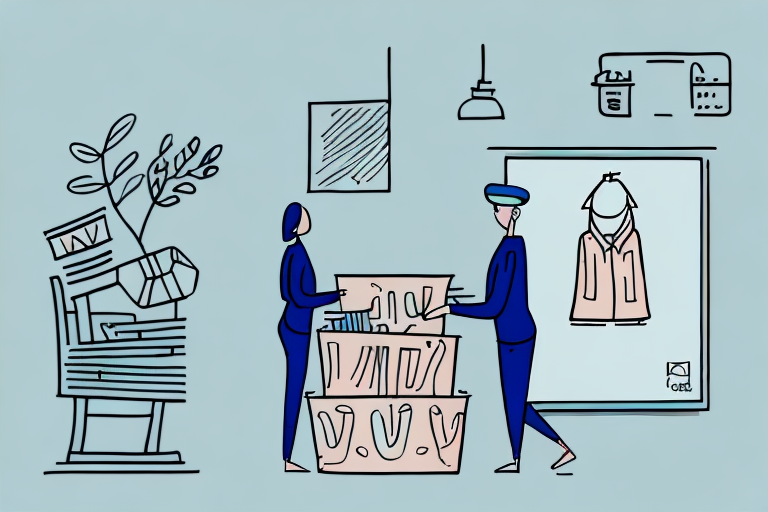How to Handle a UPS Ground Return to Sender for a Third Party
If you find yourself handling a UPS Ground return to sender for a third party, it's essential to understand the process and the common reasons for such returns. While these returns can be complex, navigating the process becomes more manageable by following key steps: initiating the return, preparing the item for shipment, and tracking the return. In this article, we'll provide a comprehensive guide to handling UPS Ground returns to sender for third parties, ensuring a smooth return process for all parties involved.
Understanding the UPS Return to Sender Process
The UPS return to sender process allows customers to return a package to the sender if it was undeliverable or unwanted by the recipient. The sender can then choose to either re-ship the item or refund the customer. In the case of a third-party return, a third party initiates the return on behalf of the original recipient.
It's important to note that the UPS return to sender process has specific guidelines and requirements. The package must be returned in its original packaging and in the same condition it was received. Additionally, the sender may be responsible for any return shipping fees. It is recommended to carefully review the UPS return policy before initiating a return to ensure a smooth and successful process.
Why Third-Party Returns Can Be Complex
Third-party returns can be intricate because three parties are involved in the process: the original sender, the recipient, and the third party facilitating the return. This often leads to conflicting interests and priorities that must be balanced. Additionally, third-party returns frequently involve unique agreements between the parties that may not exist in direct customer-seller returns.
Moreover, third-party returns can be complicated if the product being returned was damaged or altered during transit or while in the recipient's possession. This can lead to disputes over responsibility for the damage and how it should be addressed. In some cases, the third party facilitating the return may need to act as a mediator to resolve these disputes and ensure that all parties are satisfied with the outcome.
Common Reasons for Third-Party Returns
Several reasons might necessitate a third party to initiate a UPS Ground return to sender on behalf of a customer. Common reasons include:
- The item arriving damaged
- The wrong item being shipped
- The recipient no longer needing the item
- A change of heart by the recipient
- The item not matching the seller's description, such as discrepancies in size, color, or features
In such situations, the third party may need to initiate a return to ensure the customer receives the correct item or a refund.
How to Initiate a UPS Return to Sender
The first step in handling a UPS Ground return to sender for a third party is to initiate the return. This typically involves:
- Contacting UPS customer service or the seller who originally shipped the item
- Explaining the situation and providing necessary details, such as the tracking number, reason for the return, and recipient's information
Once the return is initiated, UPS will provide a return label that you can print and attach to the package. Ensure the item is securely packed and the label is affixed to the outside of the box. You can then drop off the package at any UPS location or schedule a pickup for an additional fee. Be aware that UPS may charge a fee for return shipping, which will be deducted from the refund or billed to the sender.
Step-by-Step Guide to Handling a Third-Party Return
After initiating the return, follow these steps to manage the return process effectively:
- **Contact the Recipient**: Inform them that the return is being processed and explain what to expect.
- **Prepare the Item for Return**: Securely package the item and attach the necessary shipping labels.
- **Arrange for Return Shipment**: Decide whether to drop off the package at a UPS location or schedule a pickup.
- **Track the Return**: Use the provided tracking number to monitor the package's journey back to the original seller.
- **Communicate with the Seller**: Ensure that the seller initiates the refund or exchange process once the item is received.
Note that the return process may vary depending on the seller's policies and the third-party platform used for the transaction. Some sellers may require additional documentation or have specific timeframes for accepting returns. Reviewing the return policy beforehand can help avoid delays or complications.
Tips for Communicating with the Third Party During the Return Process
Effective communication is crucial for a smooth return process. Here are some tips:
- Be Clear and Concise: Clearly explain the reason for the return and your expectations.
- Regular Updates: Ask for regular updates and be responsive to any questions from the third party.
- Maintain Professionalism: Use a professional and courteous tone to avoid escalating any issues.
- Keep Records: Document all communications, including emails and phone calls, to prevent misunderstandings.
Maintaining clear and respectful communication helps in resolving issues efficiently and ensures that all parties are aligned throughout the return process.
How to Package and Prepare the Item for Return
Proper packaging is vital to ensure the item arrives back at the original seller in good condition. Follow these steps:
- Use Original Packaging: If available, use the original box and packing materials.
- Secure the Item: Ensure the item is well-protected with padding to prevent damage during transit.
- Attach Shipping Labels: Affix the return label securely to the outside of the package, ensuring the tracking number is visible.
- Include All Accessories: Include any accessories or parts that came with the item to avoid rejection of the return.
- Add a Note: Including a note explaining the reason for the return can help the seller process it more efficiently.
Before shipping, double-check the seller's return policy to ensure compliance with their specific requirements, such as preferred shipping methods or return deadlines. Adhering to these guidelines increases the likelihood of a smooth refund or exchange process.
How to Track Your UPS Ground Return
Tracking the return package is essential to ensure it reaches the original seller. UPS provides a tracking number for each package, which can be entered on their tracking page for real-time information on the package's status and location.
Keep in mind that tracking information may take up to 24 hours to update after the package is dropped off. If the tracking information hasn't updated after this period, contact UPS customer service for assistance.
Additionally, UPS offers a service called UPS My Choice, which allows customers to receive delivery alerts, reroute packages, and authorize package release without a signature. This service can be especially beneficial for those who frequently send and receive packages through UPS.
What Happens After the Item is Returned: Refund and Re-Shipment Options
Once the item has been returned, the original seller will typically provide options for a refund or re-shipment. Depending on the reason for the return, the seller may offer a full refund or an exchange for a different item. It's essential to communicate directly with the original seller to ensure that all issues are resolved to your satisfaction.
Be aware that the timeline for receiving a refund or re-shipment varies based on the seller's policies and procedures. Some sellers may process refunds or re-shipments immediately upon receiving the returned item, while others may require additional time for inspection or processing. Additionally, some sellers may charge restocking fees or shipping fees for re-shipments, so reviewing the seller's policies beforehand is crucial.
Handling a Dispute or Issue with the Third Party
If you encounter a dispute or issue with the third party handling the return process, it's important to address the situation promptly and assertively. Here are steps to handle such situations:
- Document Everything: Keep detailed records of all interactions and provide clear evidence of any issues.
- Escalate When Necessary: If the issue isn't resolved, escalate it to a supervisor or higher authority within the third-party organization.
- Seek Legal Assistance: As a last resort, consider seeking legal assistance to protect your rights.
Throughout the process, maintain a calm and professional demeanor. Avoid aggressive language, as it can escalate tensions and hinder resolution. Focus on clearly communicating your concerns and working towards a mutually beneficial solution.
Best Practices for Streamlining Third-Party Returns with UPS Ground
To streamline the third-party return process, implement the following best practices:
- Establish Clear Communication Channels: Ensure all parties have open lines of communication to facilitate smooth interactions.
- Document Agreements: Have all agreements in writing, including timelines for return processing, refund or exchange options, and other relevant details.
- Regular Follow-Ups: Consistently follow up with all parties to ensure the process is progressing smoothly and address any arising issues promptly.
- Understand Return Policies: Have a clear understanding of the return policies of the third-party seller to determine appropriate steps for returns.
- Implement a Tracking System: Use software to track the status of returns, assign team members to handle returns, and regularly review return data to identify areas for improvement.
By following these steps and best practices, you can effectively handle a UPS Ground return to sender for a third party, ensuring the process is efficient, clear, and satisfactory for all parties involved.
For more detailed information on UPS Ground shipping times and rates, visit the ShipScience UPS Ground Shipping Guide.
Ensure you stay updated with the latest UPS policies by regularly visiting the UPS Returns Service Page and consulting reputable sources to keep your return processes efficient and compliant.




















